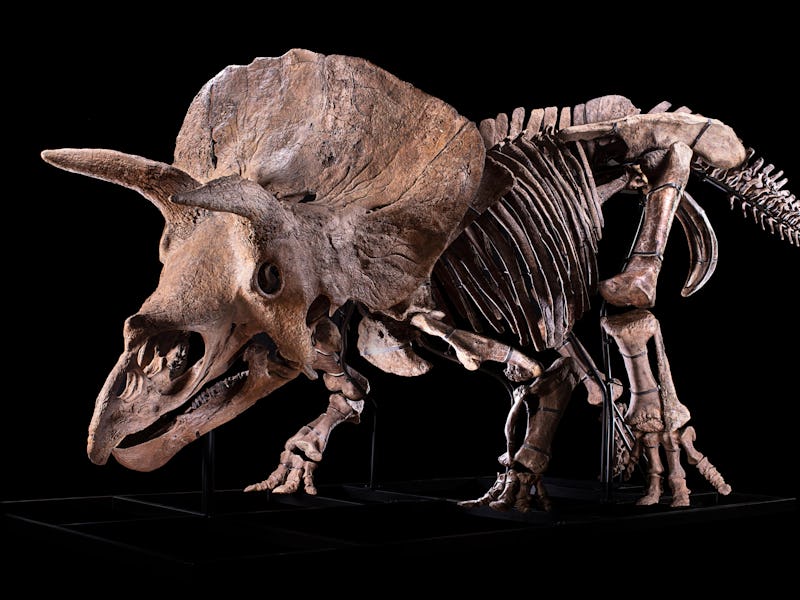66-million-year-old dinosaur fossil reveals injuries that suggest the dinosaur fought with its own kind
The famous Triceratops called 'Big John' probably fought with other Triceratops, its fossil suggests.

TRICERATOPS WAS ARMED with three horns and a shield-like neck frill that would have made it an intimidating opponent. Now, in a new study appearing on April 7 in Scientific Reports, injuries preserved in fossils suggest these dinosaurs might have at times fought their own kind.
What the researchers did — The scientists analyzed fossils of the Triceratops specimen known as "Big John," so named for its large size. The bones were discovered in 2014 in South Dakota in the rock bed known as the Hell Creek formation, and are roughly 66 million to 72 million years old.
The team focused on injuries to Big John's skull. Previously, scientists had suggested Triceratops' bony neck frill might have protected it from injuries during combat with other members of its species.
The squamosal bone of Big John shows the traumatic lesion.
WHAT THEY FOUND — The scientists revealed the right side of Big John's frill was marred by a keyhole-shaped opening that went completely through the frill. The bone surface around this hole was irregular and possessed plaque-like deposits that could have resulted from inflammation, possibly from infection.
When the researchers analyzed microscopic samples from the frill, they found the bone tissue in the margins around the hole was porous, with lots of blood vessels compared to bone tissue further away from the hole, suggesting this was newly formed bone. The margins of the hole also displayed little pits that are signs of bone remodeling — the continuing process of synthesis and destruction that helps bone respond to changing needs.
Altogether, these features suggest that at the time of Big John’s death, he had an injury that was healing. Sulfur detected in the margins of the hole but almost completely absent elsewhere in the frill may also have come from molecules generated during healing. Considering how long it takes modern reptiles to heal from traumatic injuries, the scientists estimated Big John died at least six months after he received his wound.
Previous research suggested Triceratops might damage one another when they locked horns from the front. However, using cast models of Triceratops horns to perform combat simulations, the scientists deduced that Big John's frill was likely attacked from behind by the horn of another Triceratops, study lead author Ruggero D'Anastasio, a paleopathologist at Gabriele D'Annunzio University of Chieti–Pescara in Italy, tells Inverse.
"I believe that the results of the study unequivocally confirm the existence of intraspecific fighting in Triceratops," D'Anastasio says. "The reasons for these fights remain to be clarified."
"This is a very interesting study that helps confirm the idea that Triceratops used its giant, sharp horns for combat with one another," Tyler Lyson, a vertebrate paleontologist at the Denver Museum of Nature & Science who did not take part in this research, tells Inverse. "It's specimens like this that really help bring these ancient beasts back to life and help us imagine how they were living when they were walking this planet some 67 million years ago."
WHAT'S NEXT? These findings suggest that healing mechanisms in dinosaurs "seem very similar to those of mammals," D'Anastasio says. In mammals, bone cells first absorb injured bone and then grow new bone, much as what apparently was happening with Big John.
Lyson is uneasy about how Big John was recently sold to a private collector "and thus can’t be easily studied by scientists." A basic tenet in science "is testability and reproducibility, something that cannot be done when a specimen is in private hands and not made available to scientists."
This article was originally published on